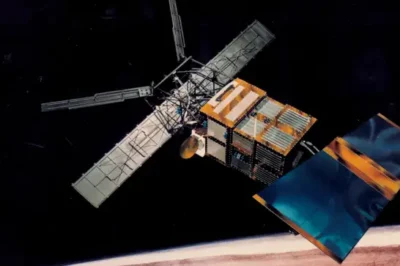
After a prolonged voyage through space lasting nearly 13 years since its mission concluded, Europe’s ERS-2 satellite has finally made its descent back to Earth, crashing and burning over the North Pacific Ocean. The European Space Agency (ESA) has confirmed that the satellite’s reentry was completed without causing any harm to life or property on Earth. Launched almost three decades ago, the ERS-2 satellite was instrumental in providing critical long-term data on various Earth phenomena, including land surfaces, ocean temperatures, the ozone layer, and polar ice caps. This wealth of information has significantly enhanced our understanding of the Earth’s system.
Simonetta Cheli, ESA’s Director of Earth Observation Programmes, praised the invaluable contributions of the ERS satellites, stating, “They have provided us with new insights on our planet, the chemistry of our atmosphere, the behavior of our oceans, and the effects of mankind’s activity on our environment – creating new opportunities for scientific research and applications.” Remarkably, the ERS-2 satellite, initially intended for a three-year operational lifespan, continued to function well beyond its expected duration until it was officially decommissioned in 2011.
Following its decommissioning, the satellite entered a deorbiting phase, gradually descending from space over the years until it met its fiery end in the Earth’s atmosphere on February 21, 2024. The satellite reached a critical altitude of approximately 80 km, where atmospheric drag caused it to disintegrate. The ESA highlighted that such uncontrolled atmospheric reentries are a standard procedure for disposing of space objects at the end of their missions, noting that objects of similar or larger size than ERS-2 reenter the atmosphere several times each year.
The agency also emphasized that ERS-2’s reentry was conducted in a ‘natural’ manner, with all remaining fuel depleted during the deorbiting process to minimize the risk of an internal malfunction that could potentially scatter debris at altitudes occupied by active satellites. This careful management ensured a safe conclusion to the satellite’s historic journey, marking the end of an era in Earth observation.







































































Leave a Reply